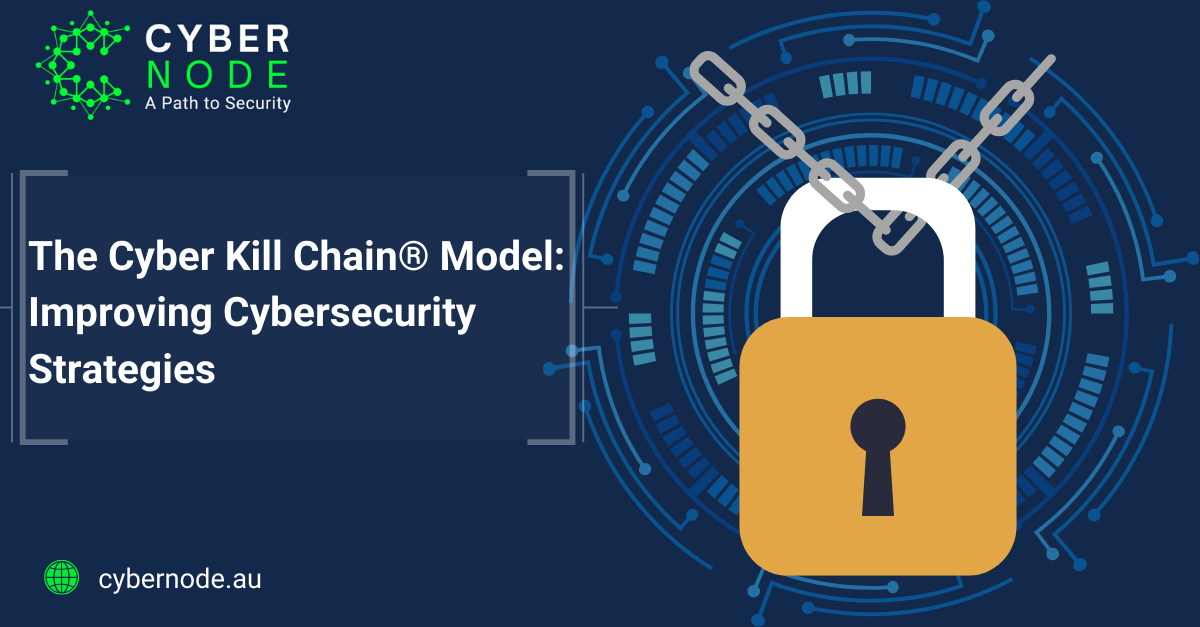
Organisations are facing a growing number of complex and persistent cyber-attacks in the constantly changing field of cybersecurity. It is essential to take a proactive and calculated approach in order to counter these dangers. With the creation of the Cyber Kill Chain® Model, the multinational aerospace and defense corporation Lockheed Martin has significantly shaped the cybersecurity environment.
What is the Cyber Kill Chain® Model?
Lockheed Martin unveiled the Cyber Kill Chain® Model in 2011, aiming to delineate the various phases of a cyber-attack. Taking cues from military tactics, the model organises the attack lifecycle into well-defined stages, providing organisations with a systematic approach to analyse, identify, and address threats.
The Seven Stages of the Cyber Kill Chain®
- Reconnaissance: To find any potential weaknesses, the attacker collects data about the target. Network scanning and the collection of open-source intelligence (OSINT) are two methods.
- Weaponisation: At this point, the attacker either develops or obtains malware, a weapon made to take advantage of the vulnerabilities found. Usually, the weapon is customised for the intended target and mode of delivery.
- Delivery: The weaponised payload is sent to the target's computer by a number of different channels, including hacked websites, malicious links, and email attachments.
- Exploitation: The attacker executes the payload and gains access to the network by taking advantage of weaknesses in the target system. This can include using social engineering strategies or exploiting software flaws.
- Installation: After gaining access, the attacker infects the compromised system with malware. Ensuring persistence and control over the target environment are the goals of this stage.
- Command and Control: Malware that has been installed communicates with outside servers that the perpetrator controls. This gives the attacker the ability to take over the infected system remotely and steal data.
- Actions on Objectives: The attacker's ultimate objectives, whether they be system interruption, data theft, or other malicious actions, are accomplished in the final step. Depending on the attacker's intentions, the outcome could be different.
Advantages of the Cyber Kill Chain® Model
- Early Detection of Threats: By dissecting the stages of a cyberattack, organisations can spot and address threats in their initial phases, hindering their advancement.
- Proactive Security: The model promotes a proactive stance in cybersecurity rather than a reactive one. Organisations can predict and get ready for potential threats by comprehending the tactics utilised by attackers.
- Enhancement of Incident Response: The Cyber Kill Chain® Model helps create and improve incident response strategies. By matching their reaction plans to each link in the chain, organisations may reduce the effect of cyberattacks.
In the field of cybersecurity, Lockheed Martin's Cyber Kill Chain® Model has become an essential tool, providing enterprises with a methodical and proactive way to recognise, stop, and handle cyberattacks. Even if there might not be a single solution that works for everyone, its widespread use highlights how important it is to the ongoing fight against cyber threats. The Cyber Kill Chain® Model is still a useful tool for businesses looking to strengthen their cyber security and keep one step ahead of attackers as the threat landscape changes constantly. If you seek to protect your business, the expert cybersecurity team at Cyber Node can assist you in securing your business. We specialise in identifying and eradicating vulnerabilities, adopting best practices, and customising solutions to meet your specific needs. You can check out our services and book a call with us!
- Cyber Security

